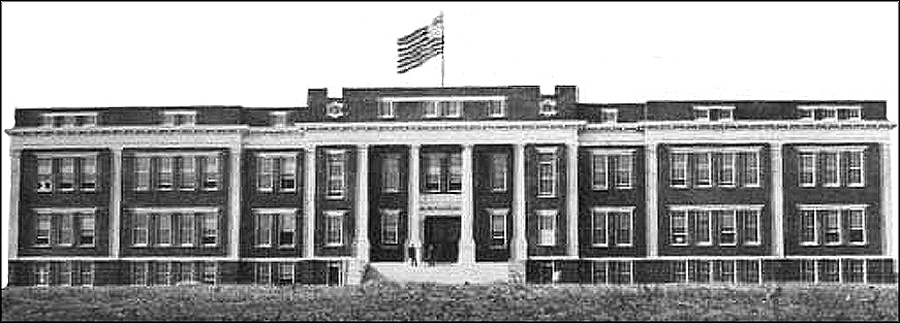As a commuting pre-engineering student at East Tennessee State College/University in the early 1960s, I found the school library to be a convenient haven for study between classes. A half century later, I now visit the beautiful and well-stocked Charles C. Sherrod Library that opened in 1998 to research local history.

The school opened in 1911 as a normal school, became a teachers college in 1925 and was elevated to university status in 1963. The first school library was situated in the administration building, a 40-room, three-story modern brick and marble structure that included space for offices, a laboratory, recitation rooms, society halls and an auditorium. The library occupied one of the larger rooms. There was no permanent librarian per se; instead, the individual in charge was designated as teacher-librarian.
By spring 1912, the library, which used the Dewey Decimal System, contained about 1200 volumes and a collection of books pertaining to science, agriculture, industrial arts, education, history and literature. From its beginning, the number of volumes increased rapidly, eventually outgrowing its space. In 1914, the college hired a full-time librarian, Miss Olive Taylor, who utilized student help as needed.
During 1922, the library was moved to a separate building on campus, prompting officials to cleverly excuse students from classes that week to transport books to pre-labeled shelves in the new facility. Shortly thereafter, a second person, Miss Florence Wilkie, was hired as a cataloguer. Soon, the library had expanded to more then 15,000 books, 200 periodicals and a sizable assortment of newspapers.
In May 1931, students eagerly awaited the opening of its third library that was to be a decided improvement over the existing one. Construction began early that year and was completed by early summer.
The new building was modern and a bit unusual compared to the previous ones. It had the usual stack rooms: work and receiving rooms, rooms for conferences, rooms for cataloguing, seminar halls, library science, children’s library, rooms for reserve books, a periodical room and offices for staff headquarters. The reading area was on one floor and measured 119’ long, 32’ wide and 50’ high. A 36’ extension brought the total length to 155’. Just above this room on the second floor was a large room, which was designated for a museum. It measured 121’ long, 36’ wide and had an arched ceiling 12’ on the side and running up considerably higher in the center. It too was beautifully lighted, having 21 windows. The school already had a rare collection of mostly East Tennessee historical relics making it apparent that this area would become one of the most interesting and outstanding features of anything on campus.
The new library contained a large fireproof vault, a number of spacious classrooms and a librarian’s office with telephone connection to various parts of the building. There was also a small assembly room for various activities.
The beautiful new library was deemed to be a living memorial to Dr. C.C. Sherrod, the school’s beloved president who spent much time visiting library buildings on other campuses and working closely with the architects before the final plan was approved.
The building itself was incombustible, being of concrete, brick and stone structure with matching fumed oak finish furniture. The floors were terrazzo and concrete overlaid with rubber tile and battleship linoleum, making it essentially noise proof. There was shelving space for 130,000 volumes with meeting space to accommodate 300 students. The cost of the building was approximately $150,000.
Through the efficient and untiring efforts of the two librarians and the ever-progressive president, the library became the outstanding feature on campus for aiding knowledge-seeking students on a journey to a higher and better education.
